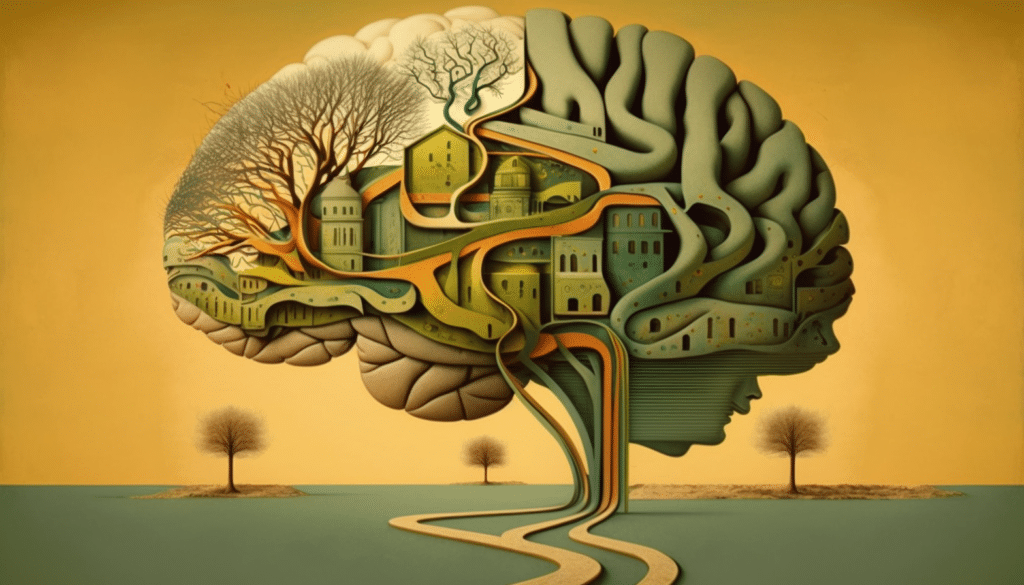EMDR therapy works because it can target subconscious memory – also called “implicit memory” which is the key to effective change in psychotherapy. Implicit memory is outside of conscious awareness, such as that of emotion, the body, movement, etc.
If implicit memory is not changed then the root cause of will usually not be dealt with. Allow me to explain why in my online counselling and psychotherapy practice I focus on changing implicit memory with a combination of virtual EMDR Therapy and Emotion-Focused Therapy because these are two approaches that focus on this.
Types of Memory
Sensory information become patterns of energy and information in our neural architecture in the form of memory. When we think of memory we often assume it’s explicit memory about what we can consciously recall. However, memory comes in different forms. There are two main types of memory that are, which are:
- implicit; and,
- explicit, also known as declarative memory.
Implicit Memory
Implicit memory automatically forms outside of conscious awareness and can be difficult to consciously interpret because it is not originally (directly) formed with language. Implicit memory is stored in 3 regions of the brain. The first region is the amygdala, which stores emotional memory. The second region is the striatum, which stores habitual memory. The third region is the cerebellum, which stores procedural memory.
Declarative Memory
Generally, declarative memory consists of:
- Working memory (immediate memory);
- Short-term memory (seconds to days); and
- Long-term memory.
Working memory and short-term memory are localized in the prefrontal cortex. Long-term memory is distributed among many brain regions, but the hippocampus and surrounding regions have been found to be of especial significance to explicit memory. The hippocampus is necessary for the conversion of short-term explicit memory to long term memory (note: the hippocampus is not needed for the conversion of implicit memory). The consolidation process from the hippocampus to the respective memory regions for explicit memory can take anywhere from days to years.
High-Road and Low-Road Pathways

For our purposes, there are two pathways in the brain that assess our environment. One is sub-cortical (unconscious) and faster, called the “low road”. The second is cortical (conscious) and slower, called the “high-road”. Sub-cortical means below the cortex. Cortical means involving the cortex. For the sub-cortical pathway (low road), information from the senses meets in the thalamus (sensory switch board of the brain) and relays information directly to the amygdala, bypassing all conscious involvement. For the cortical pathway (high road), the sensory information goes to the thalamus, then to the cortex and hippocampus.
Regarding the subcortical “low road” pathway and the lack of conscious involvement, this is significant because it means that language is not used for encoding emotional memories, so clients may not be consciously aware of what is causing them distress. The amygdala is fully formed in the 8th month of gestation, and the hippocampus doesn’t form until after the first year of birth, so implicit emotional memories can form early in life, but might not be remembered and yet still affect the client in the form of unelaborated distress and feelings that aren’t understood. EMDR therapy works by targeting the change in implicit emotional memories.
Pathways and Traumatic Memories
The brain circuits in the faster sub-cortical “low road” don’t have the capacity for context and detail. As such, implicit emotional memories stored in the amygdala do not have situational or temporal context – that’s why significant and traumatic memories are experienced as if they are happening right now. Cues in the environment (or even imagination) can trigger this type of memory. The slower cortical pathway in the “high road” is capable of giving detailed assessment and context, and can modulate the amygdala’s appraisals. The significance of the direct “low-road” pathway to the amygdala is that such appraisals occur in a quick, generalized, and threat-biased way – through the lens of past implicit memories. This means that a person with trauma views their present situations through the lens of past traumatic memories so that anything of remote similarity will register as a potential danger.
Until next time, keep up the excellent work on your journey in counselling, psychotherapy, and personal growth!
Alistair Gordon, MA, RCC, CCC
Wellspring Counselling Inc.




